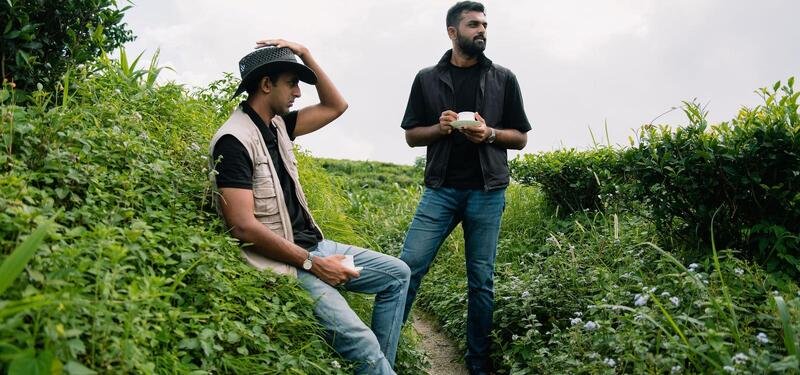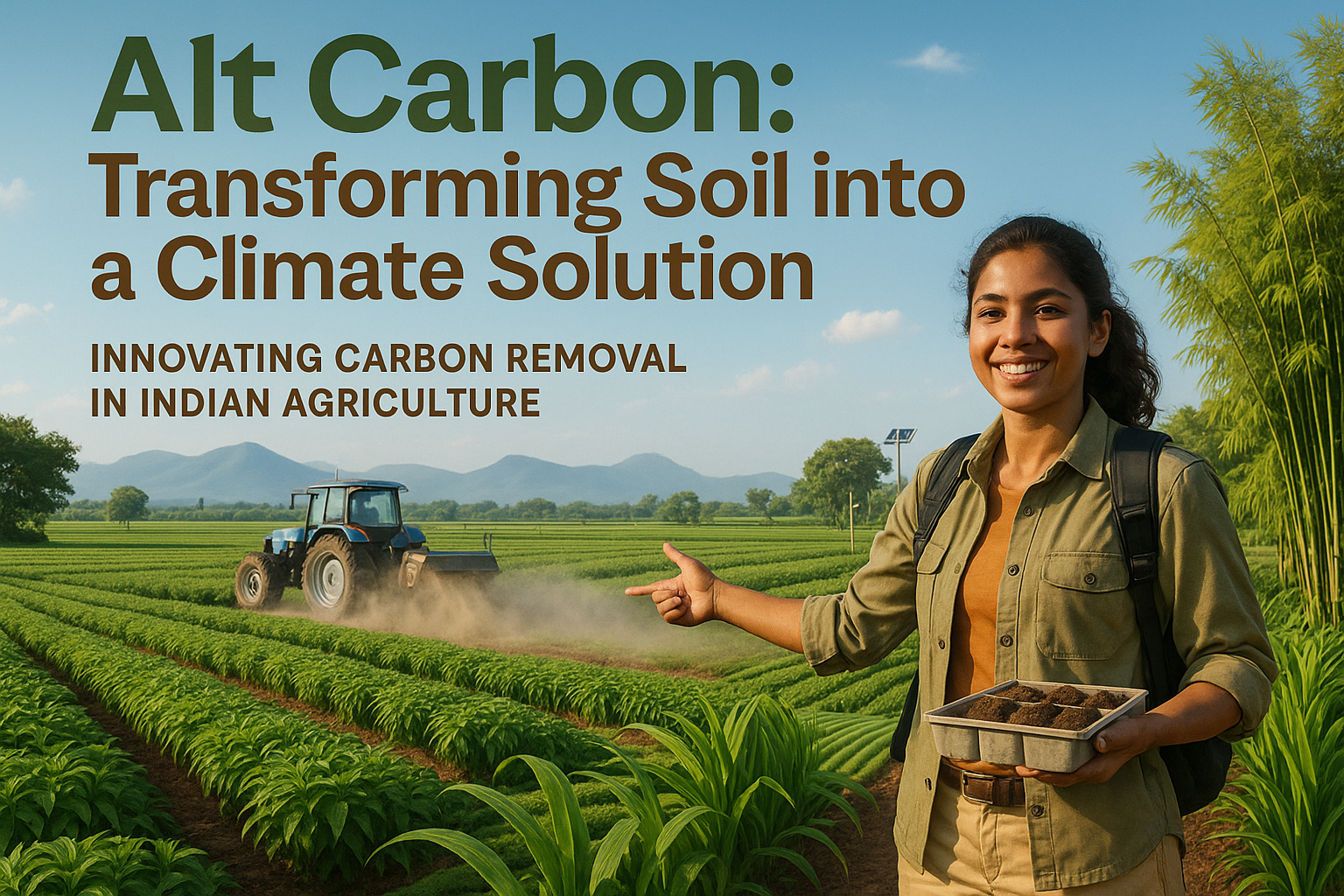1. From Crisis to Innovation: Alt Carbon’s Origin Story
Alt Carbon began in 2020 when brothers Shrey and Sparsh Agarwal visited their bankrupt tea estate in Darjeeling. What started as a farewell turned into the birth of a climate-tech startup. The duo realized that traditional methods couldn’t save the tea business, so they explored carbon markets and discovered a sustainable way to protect their land while fighting climate change.
2. Enhanced Rock Weathering: The Core Technology
Alt Carbon uses Enhanced Rock Weathering (ERW) to remove carbon from the atmosphere. The method involves spreading finely crushed basalt rock dust on farmland. When rainwater interacts with this dust, it triggers a natural chemical reaction that captures CO₂ and stores it in soil and oceans for thousands of years. It’s a low-energy, scalable carbon removal solution.
3. ‘Green Soil’: A Farmer-Friendly Innovation
To gain farmer trust, Alt Carbon developed “Hari Maati” or “Green Soil”—a proprietary blend of basalt dust and organic materials. Unlike plain rock dust, this mixture improves soil health by adding micronutrients and enhancing water retention. Farmers see visible benefits to their crops, which helps encourage adoption of this climate-friendly practice across diverse farmlands.
4. Geographic Reach: From Tea to Rice and Bamboo Fields
Alt Carbon’s initial pilot covered a 500-acre tea estate in Darjeeling. Seeing positive results, the project expanded across North Bengal, extending to rice and bamboo farms. The startup now plans to scale to 5 lakh hectares across India. This vast expansion could make a significant dent in India’s carbon emissions, especially in agriculture-heavy regions.

5. Ambitious Climate Goal: 5 Million Tonnes CO₂ by 2030
Alt Carbon aims to remove 5 million tonnes of carbon dioxide from India’s atmosphere by 2030. This goal is equivalent to the annual emissions of hundreds of factories. By leveraging natural mineral weathering and existing farmland, the company is turning agricultural landscapes into carbon sinks, showing how climate solutions can integrate with rural livelihoods.
6. Sustainable Sourcing and Transport of Basalt Dust
The basalt dust comes from the Rajmahal Traps in eastern India—a volcanic region. Alt Carbon utilizes waste dust from existing mining operations, avoiding extra emissions from rock crushing. It uses rail and diesel trucks already part of the tea industry’s supply chain, thereby reducing its carbon footprint from transportation and avoiding infrastructure duplication.
7. Carbon Credit Pricing and Market Impact
Alt Carbon estimates its carbon credits at $270 per metric ton, much lower than direct air capture solutions which cost around $800 per ton. With continued development and scaling, they hope to reduce this cost significantly within the next 3–4 years, making high-quality, verifiable carbon removal more accessible and commercially viable for global buyers.
8. Scientific Monitoring: Multi-Layer Measurement Approach
To ensure accuracy, Alt Carbon uses a three-layered system for monitoring carbon removal. It starts with soil chemical analysis, followed by water sampling (including groundwater and rivers), and ends with proprietary AI-powered transport models. These models track how carbon transitions from soil to water bodies, aligning with global registry standards like Isometric and Puro.earth.
9. Advanced Research: Labs in Darjeeling and Bengaluru
Alt Carbon has established two labs—in Darjeeling and Bengaluru—staffed by 25 members including 8–10 PhDs. The labs focus on improving data collection, soil analysis, and deploying sensors and remote sensing tools. The company is building a hardware studio to gather real-time, high-quality environmental data to further validate its carbon removal performance at scale.
10. Global Recognition and Strategic Partnerships
Alt Carbon has attracted major international backers, including Stripe, Meta, Alphabet, Shopify, and McKinsey through a $1B carbon removal initiative. It also signed agreements with Frontier and Japan’s MOL Group. These partnerships solidify its place in the global carbon market and will help scale its Enhanced Rock Weathering method across South Asia.







